Crickets vs. Grasshoppers vs. Locusts – What’s the Difference?
Crickets vs. Grasshoppers vs. Locusts – What’s the Difference?
Orthoptera
Crickets, grasshoppers, and locusts are part of the order Orthoptera, which accounts for their similarities that make them confusing to distinguish. The term Orthoptera is Greek and translates to “straight wing,” referring to both the appearance and structure of the front wings of the species in the order. In addition to these wings, Orthoptera are known for having cylindrical-shaped bodies, powerful hind legs for jumping, fan-shaped back wings, and the ability to stridulate. Stridulation is the creation of noise by rubbing two body parts together, which is done differently depending on the species.
Approximately 24,000 different species of Orthoptera exist across the globe, including over 1,300 species which reside in the United States. On average, these insects range from about ¼ inch to 4 inches long. Like many other insects, Orthoptera pass through three life stages from egg, to nymph, to adult. While the members of this order have a lot of similarities, here are some of the differences that set crickets, grasshoppers, and locusts apart.
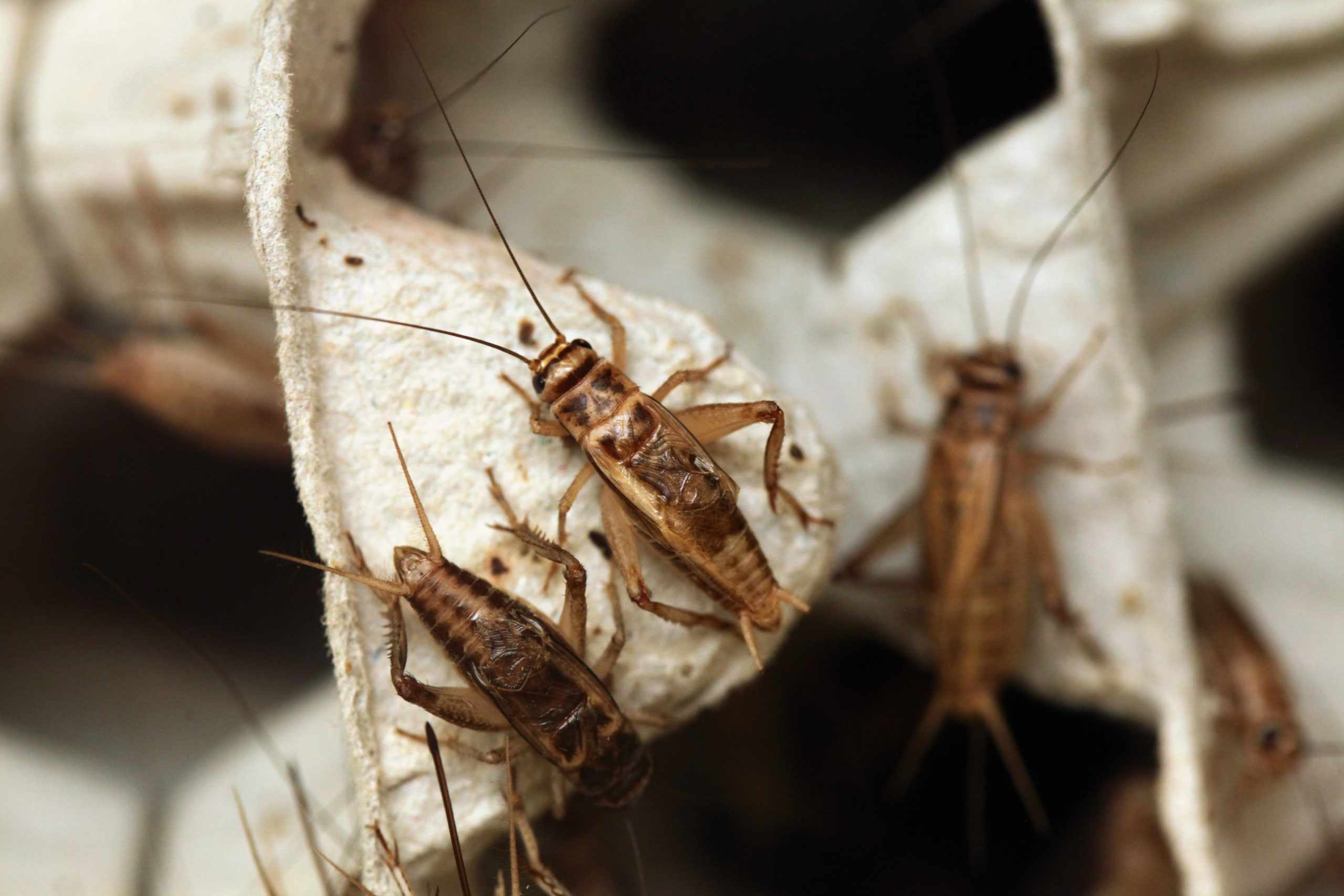
Appearance
Crickets – Crickets are part of the suborder Ensifera. Notably, all members of this sub-species, with the exception of mole crickets, have antennae that are as long as, or longer, than the length of their bodies. They are about 1/8 inch to 2 inches in length and are primarily black, brown, or grey in color.

Grasshoppers – Grasshoppers are part of the suborder Caelifera, which separates them in a few ways from crickets. On average, grasshoppers are larger, measuring between 1/3 inch to 3 inches long when fully grown. Their antennae are also notably short, never measuring the same length as their bodies. They tend to be a brown, grey, or green in color, and the males often have more brightly colored wings to attract mates.
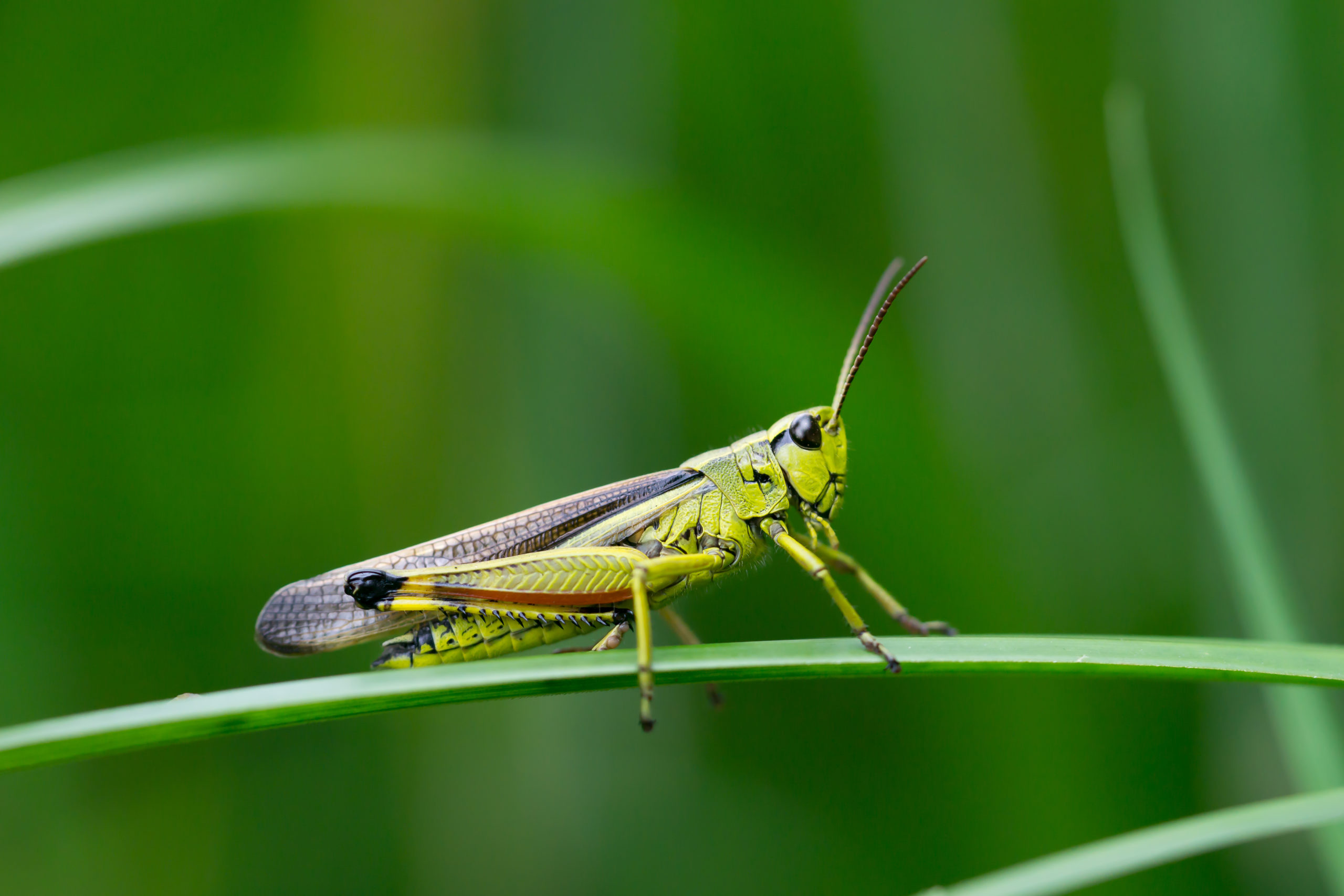
Locusts – Locusts are actually a specific kind of grasshopper that are unique from other grasshoppers due to their migration patterns and swarming abilities. They are extremely similar in appearance to other grasshoppers; however, they do have a notable change in their coloration while in their migratory or swarming phases.
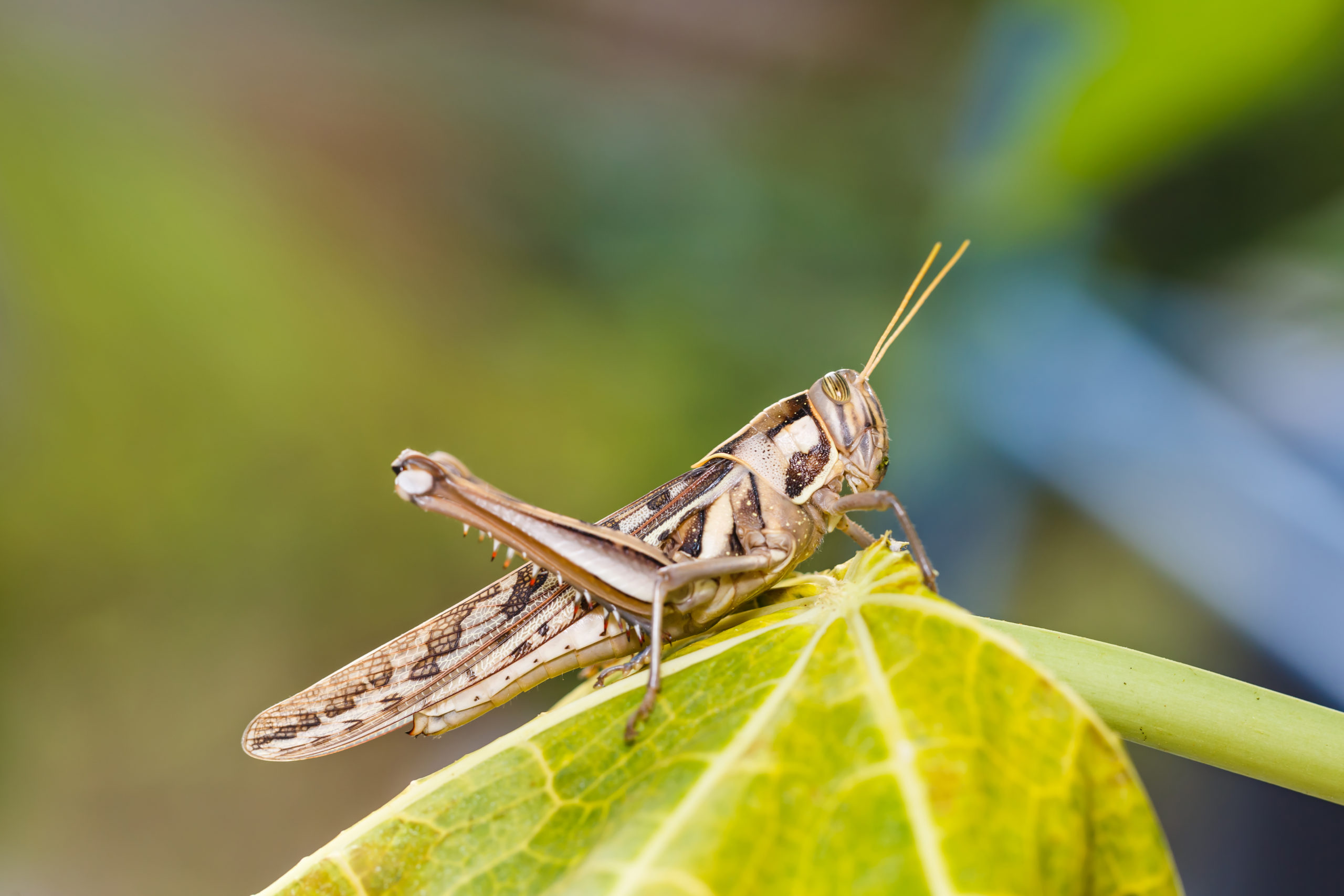
Diet
Crickets – These insects are omnivores and will consume a variety of plants and insects including fruits, vegetables, ornamental plants, seeds, live and/or dead insects, animal matter, and grasses. In addition to this, crickets have also been known to consume a surprising variety of textiles and artificial materials such as rubbers, wool, cotton, silk, leather, and nylon products.
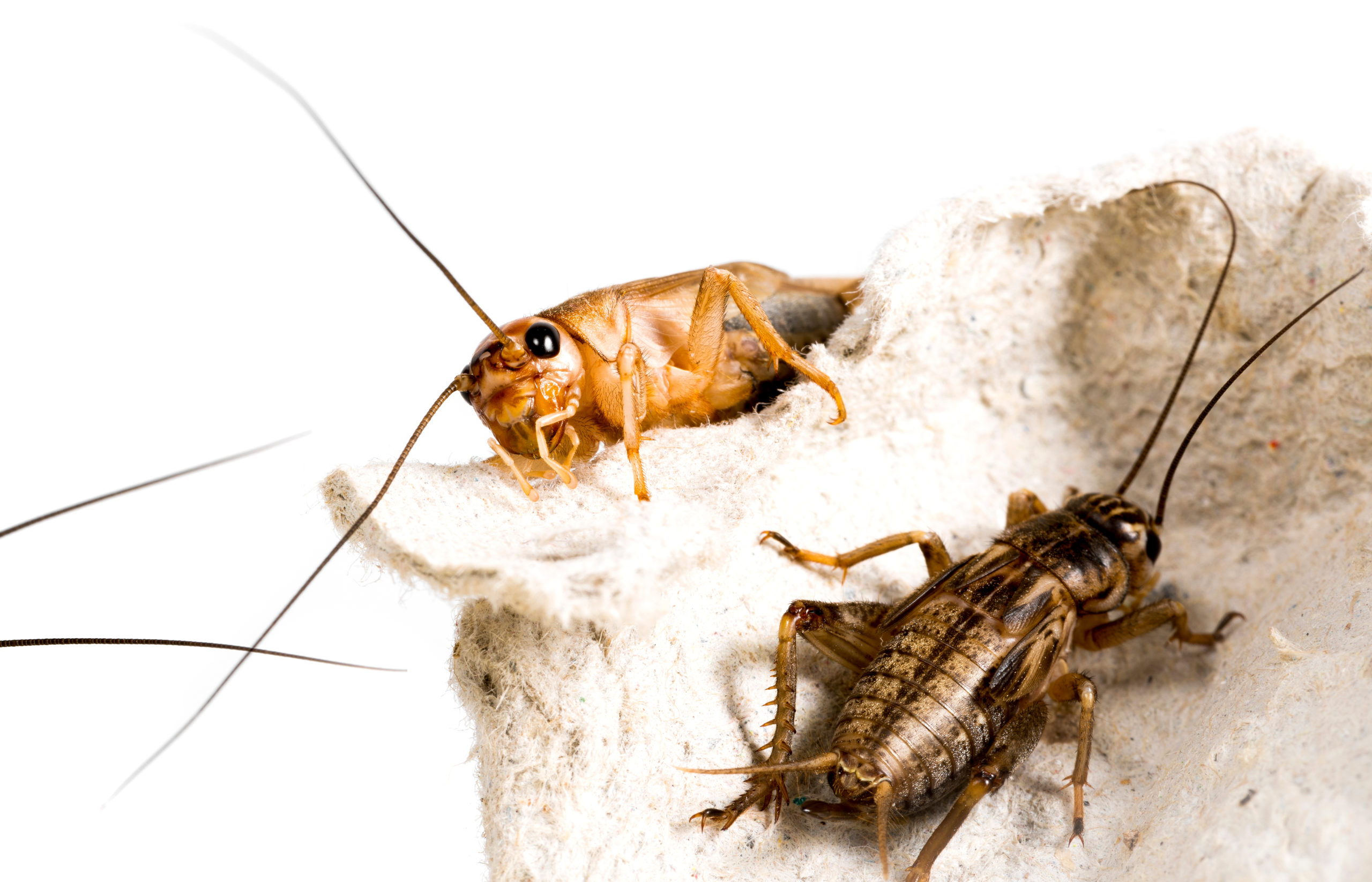
Grasshoppers – Grasshoppers are primarily herbivores and will feast on a variety of organic matter including leaves, flowers, seeds, vegetables, stems, weeds, bark, and more. Some sub-species of grasshoppers will also indulge in toxic plants, as they possess the unique ability to store the toxins in their bodies which, in turn, discourages predators from targeting them.

Locusts – These insects pass in and out of two phases. The first phase, known as the solitary phase, is rather docile and their eating habits are virtually identical to other grasshopper sub-species. However, during the other phase, the gregarious phase, the locusts begin to swarm in mass and consume plants in a frenzy. This is where locusts gain their notoriety for decimating crops or landscapes.

Sound
Crickets – Crickets stridulate by rubbing their wings together. Interestingly, there are some species of crickets, such as camel crickets, that cannot produce the chirping noises at all. In order to hear the noises of other crickets, they use a kind of ‘ear’ that is located on their front legs.

Grasshoppers – Grasshoppers also use their wings to “sing,” however, it’s their hind legs rubbing against the wings that produce their song. They, in turn, detect sound using their ‘ears’ which are located towards the base of their abdomen.
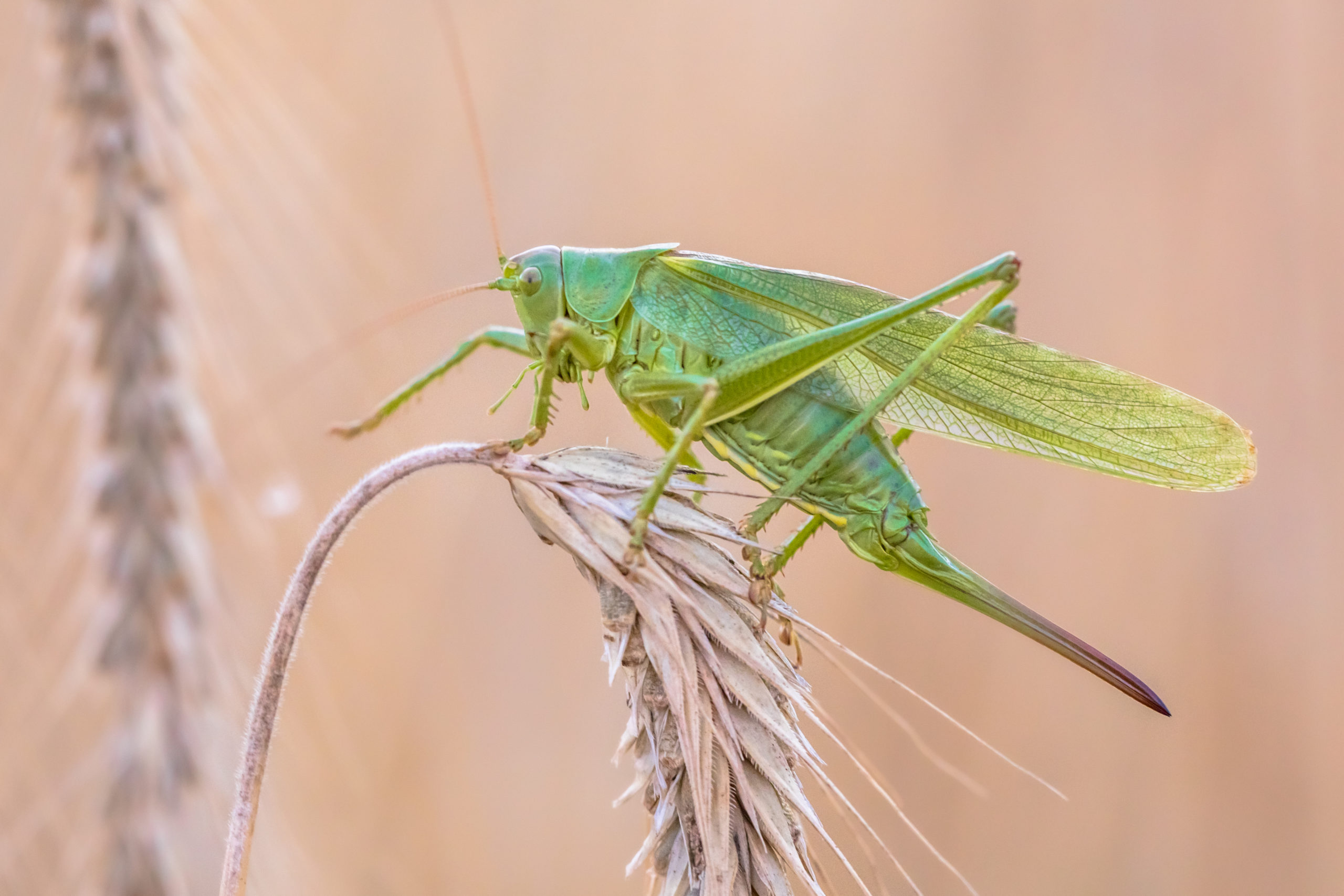
Locusts – Being a type of grasshopper themselves, locusts also produce sound in the same way as explained above.
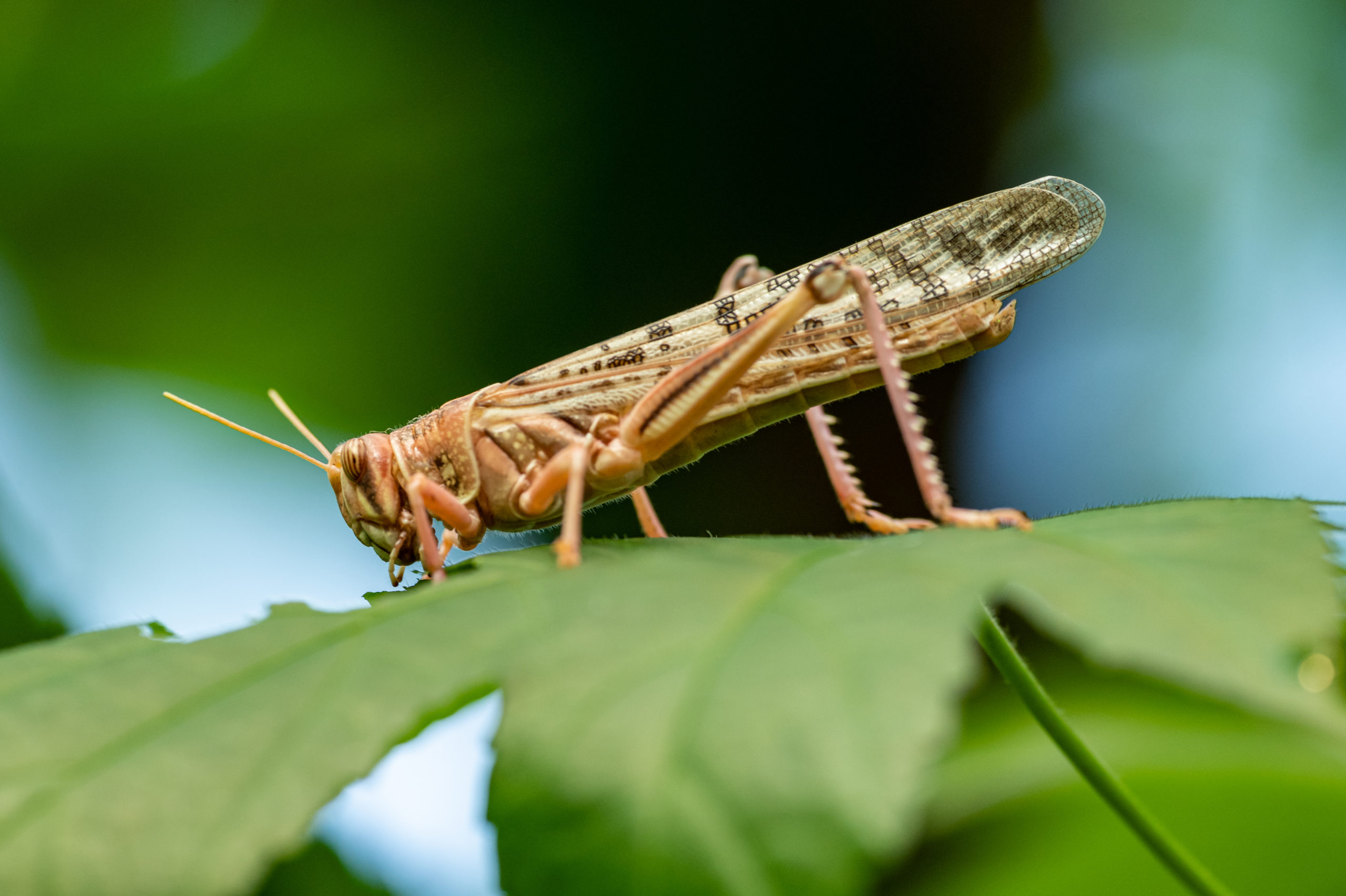
Citations
Blue, M.-L. (2018) The Differences Between Locusts, Grasshoppers and Cicadas, Sciencing. Available at: https://sciencing.com/differences-between-locusts-grasshoppers-cicadas-8284950.html (Accessed: June 22, 2021).
Britton, D. (2020) Grasshoppers, crickets, katydids and locusts: Order Orthoptera, The Australian Museum. Available at: https://australian.museum/learn/animals/insects/grasshoppers-crickets-katydids-and-locusts-order-orthoptera/ (Accessed: June 22, 2021).
Camel Cricket (no date) Horticulture and Home Pest News. Iowa State University. Available at: https://hortnews.extension.iastate.edu/camel-cricket (Accessed: June 15, 2021).
Camel Crickets 101: Information About An Occasional Invader (2021) PestWorld – Your Partner in Pest Prevention. The National Pest Management Association. Available at: https://www.pestworld.org/news-hub/pest-articles/camel-crickets-101/ (Accessed: June 15, 2021).
Field Cricket – Gryllus pennsylvanicus (2013) The Virtual Nature Trail at Penn State New Kensington. The Pennsylvania State University. Available at: https://www.dept.psu.edu/nkbiology/naturetrail/speciespages/cricket.htm (Accessed: June 15, 2021).
Grasshoppers and Crickets (Order: Orthoptera) (no date) The Amateur Entomologists’ Society. Available at: https://www.amentsoc.org/insects/fact-files/orders/orthoptera.html (Accessed: June 15, 2021).
Roche, J. (2015) The Origin of Grasshoppers, Katydids, and Crickets: A New Study Resolves the Evolutionary Tree of the Orthoptera, Entomology Today. The Entomological Society of America. Available at: https://entomologytoday.org/2015/04/08/the-origin-of-grasshoppers-katydids-and-crickets-a-new-study-resolves-the-evolutionary-tree-of-the-orthoptera/ (Accessed: June 15, 2021).
Sajem, Y. (2020) What Kind of Food Do Grasshoppers Eat?, Pets on Mom. Available at: https://animals.mom.com/kind-food-grasshoppers-eat-10974.html (Accessed: June 22, 2021).
Simpson, V. (2020) What Are The Differences Between Crickets And Grasshoppers?, WorldAtlas. Available at: https://www.worldatlas.com/articles/what-are-the-differences-between-crickets-and-grasshoppers.html (Accessed: June 22, 2021).
Waldvogel, M. and Alder, P. (2018) Camel Crickets, NC State Extension Publications. NC State University. Available at: https://content.ces.ncsu.edu/camel-crickets (Accessed: June 15, 2021).
Walker, T. (2021) field crickets – Gryllus spp., The University of Florida Department of Entomology and Nematology. The Florida Department of Agriculture and Consumer Services. Available at: https://entnemdept.ufl.edu/Creatures/misc/crickets/gryllus.html (Accessed: June 15, 2021).
Walker, T. (2014) House Cricket – Acheta domesticus (Linnaeus), The University of Florida Department of Entomology and Nematology. The Florida Department of Agriculture and Consumer Services. Available at: https://entnemdept.ufl.edu/creatures/misc/crickets/adomest.html (Accessed: June 15, 2021).
Walker, T. (no date) How to Recognize Crickets, Katydids, and Cicadas, Singing Insects of North America (SINA). Available at: https://orthsoc.org/sina/i00dis.htm (Accessed: June 22, 2021).
8 Creative Ways to Have a Pest-Free Fourth of July
8 Creative Ways to Have a Pest-Free Fourth of July 8 Creative Ways to Have a Pest-Free Fourth of July Summary: The Fourth [...]
A Simple Guide to Preventing Stinging Pests
A Simple Guide to Preventing Stinging Pests A Simple Guide to Preventing Stinging Pests Summary: Stinging insects are more active in warm weather, [...]
These 10 Natural Mosquito Repellents Can Actually Help
These 10 Natural Mosquito Repellents Can Actually Help These 10 Natural Mosquito Repellents Can Actually Help Summary: Natural mosquito repellents are easier to [...]
How to Get Rid of Carpet Beetles
How to Get Rid of Carpet Beetles How to Get Rid of Carpet Beetles Summary: Carpet beetles are sneaky pests that don’t usually [...]
How Do Roaches Affect Asthma and Allergies?
How Do Roaches Affect Asthma and Allergies? How Do Roaches Affect Asthma and Allergies? Summary: It’s no secret that pests impact human health, [...]
These 5 Carnivorous Pests Might Surprise You!
These 5 Carnivorous Pests Might Surprise You! These 5 Carnivorous Pests Might Surprise You! Summary: There are many eco-friendly ways to prevent pests, [...]

